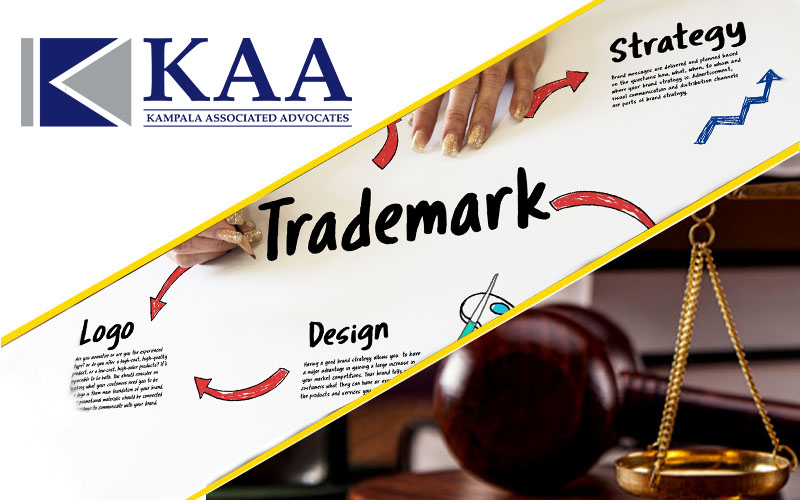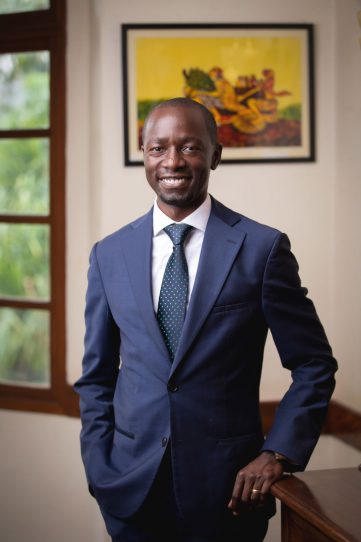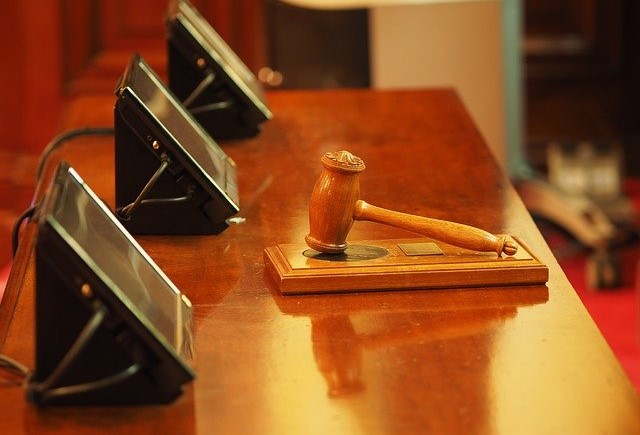Introduction
Like many other developing countries, the tech hub ecosystem in Uganda has experienced massive growth over the years with a number of applications and software programs being created in almost all sectors of human endeavor in Uganda. For most of the software programs and applications, a number of intellectual property rights are routinely and unknowingly created. Other factors being constant, it is normally the knowledge and attendant ability to exclusively exploit the economic rights vested in the various intellectual property rights, that makes a fundamental difference in the fortunes of the creators or owners or the intellectual property rights.
According to the recently launched National IP Policy of 2019, lack of awareness of Intellectual Property Rights (IPRs) is one of the major setbacks in the growth of innovation and the protection of IPRs in Uganda. This write up is intended to try and bridge the information gap that many software creators face.
What is Software?
Software is a set of instructions, data or programs used to operate computers and execute specific tasks.
Source code refers to computer instructions that can be read by humans with a lot of learning and practice. Today, there are a number of programs like JavaScript, PHP and Python, in which source code can be written by software developers.
Object code is generated from source code after going through compiler or other translator. It is in executable machine code format. Object code contains a sequence of machine understandable instructions to which Central Processing Unit understands and executes
There are two main ways in which software is created, “proprietary” and “open source”.
Under proprietary, the software is built by a person or a company and then sold off for financial gain without releasing the source code to the public, thereby making it impossible to manipulate or use that software without a licence granted by the proprietor. On the other hand, open source code is software that is usually free and anyone can download or manipulate it to create other software programs. So many software programs that we use today, like VLC and Mozilla Firefox, are open to the public for use and manipulation at will. The developers of such software are usually volunteers who are simply interested in the development of the software and users of such open source are required not to limit the distribution of any improvements made thereon.
Having this in mind, we need to determine which IPRs exist in the creation of software and whether those rights can be protected.
Which IPRs exist?
Intellectual property is an intangible asset that is a creation of the mind and the creator has every right to own and protect that asset. In fact, it is one of the most valuable assets in the creation of software programs. The ownership of these rights may change based on the terms of a contract or simply because it was created by an employee during the course of employment, or even because it was created by a student, trainee or apprentice in the course of training. Either way, the parties involved, especially the developers, must be able to identify these rights in order to protect them and thereafter, exploit them to the fullest.
There are various categories of Intellectual Property under the law in Uganda. Not every software program or applications will be capable of being protected by all categories, although it is possible depending on the facts and circumstances.
Trade Secrets
Trade secrets in Uganda are protected under the Trade Secret Protection Act, 2009. The objective of the Act is to provide for the protection of undisclosed information in commercial transactions and to provide for other related matters.
A trade secret is defined to mean information including but not limited to a formula, pattern, compilation, program, method, technique, or process, or information contained or embodied in a product, device or mechanism which;
- is, or may be used in a trade or business;
- is not generally known in that trade or business;
- has economic value from not being generally known;
- is the subject of efforts that are reasonable under the circumstances to maintain its secrecy
One of the most famous trade secrets as far as algorithms are concerned is the Google Search Algorithm. It is the most used search engine on the internet all over the world and many of the modifications by Google are kept secret to avoid people manipulating the system. This is why the search engine behemoth is at the top, over all the other competitors.
Once you have a working idea for a software system or algorithm, it is important that you seek advice before you start proposing it to unfair competitors in search for investors. It may be worth protecting as a trade secret. Or maybe what you need is a simple non-disclosure agreement! Software developers must therefore consider obtaining advice from an IP lawyer before pitching these innovative ideas.
Trademarks
Once the idea for a software system is expressed either orally or in written form, the cat is out of the bag at that point. The next best step should be to name the cat, or in this case, brand your idea and protect any name, mark, logo and slogan or phrase that you will use to protect that brand. The brand of your software idea or proposal can be protected as a trademark under the Trademarks Act and Regulations of Uganda. Trademarks are valid for seven years from the filing date of the application and may be renewed indefinitely for successive ten year periods.
The basic purpose of a trademark is to identify and distinguish the source of the software system created under that trademark or trade name and that identity must be distinct or distinguishable from already registered marks pertaining to software. The software marketplace is a crowded space and one needs to maintain a distinct identity that showcases their presence and uniqueness therein. When a developer allows end users to apply the software, before seeking trademark protection, the developer is essentially disseminating one of his/her most valuable assets to the public for free and without any safeguards.
Developers must, from the very beginning, recognize the names, words, colors and phrases that form the brand of a newly created software system. Once registered as trademarks, the developer gains the exclusive right to use them in relation to that software system and this right can be enforced in courts of law against anyone who uses the registered mark without permission or license.
Copyrights
Copyright offers creators, authors and artists protection for literary and artistic creations. It allows creators to protect the expression of their ideas. Copyrights can be used exclusively to protect creative designs, text, images and graphics that may be very essential to the software system.
More importantly however, the source code written by a developer can be copyrighted under the Copyrights and Neighboring Rights Act 2006 to prevent people from copying that source code without permission from the creator. This is usually the case with proprietary software which is created for monetary gain and is not freely available to the public. Proprietary source code can be written and protected in the same way an artiste copyrights the lyrics of a song.
When it comes to open source code, a few things must be understood. The creators of open source code own the copyright to that code but give licenses to the public with simple or no terms at all. For instance, GNU General Public License (GPL) is a commonly used series of free software licenses that allow an end user to modify, run, study and share the software. However, as a condition, licensees must make any software created from GPL freely available to recipients under the same terms.
This may limit your ability to copyright any derivative work since it may be copyright infringement itself. The question then is; since developers usually use open source to create systems of their own, can software really be copyrighted?
The biggest software development case ever
This is the subject of discussion in Google Vs Oracle, which is considered one of the biggest software development cases ever. This case has lasted over a decade and it is currently being determined by the Supreme Court of the United States. It all started when Google reverse-engineered Java while building its Android platform. In the process, it copied the “structure, sequence, and organization” of 37 Java APIs into Android. Google’s response was that an API is like an alphabet or a grammar. They’re the fundamental elements used to create programs.
API is the acronym for “Application Programming Interface”, which is a software intermediary that allows two applications to talk to each other. Almost all modern software depends on open APIs. When a web browser works with Apple or Microsoft it communicates through APIs. When a Smartphone tells the weather or gives directions to a place, it uses APIs to bridge the gap between the service offered, the server and the device used.
If Oracle succeeds, the software community will be changed forever. As already noted, it is tedious for a developer to build source code or an API from scratch. It would definitely be even harder for startups. Microsoft, which made a filing as amicus curiae (friend of the court) in the same case, explained that; “programmers rely on sharing, modifying, and enhancing previously developed code to create new products and develop new functionality. Without the ability to reuse functional code to create new things, “innovative follow-on development will be compromised.”
This may not make much sense to the uninitiated; however, we are certain that developers can imagine the threat that this on-going dispute poses. This is why it is important for developers to beware of the source code they use and whether it is copyrighted or not. The source code may be subject to certain IP terms and conditions that have to be complied with in order to avoid being sued for copyright infringement.
This is also important because the software developers and tech companies who create source code should create an IP policy and terms for the use of any newly created software, especially for end users. Such a policy cannot be created if you don’t know which IPRs exist in the software. Unfair competitors are always ready to copy and manipulate this software for their own benefit. You may need to involve an IP lawyer to help understand which software or program can be copyrighted and which one cannot.
Copyright for computer programs lasts 50 years from the time the program becomes available to the public. It should however be noted that copyright offers a sort of narrow protection because it only stops people from copying a substantial amount of the copyrighted code as expressed, but it does not stop people from imitating that code and expressing it differently to perform a different function.
Patents
Patent protection for computer software is rare although not impossible to obtain. In Uganda, a patent can only be granted for an invention that is novel; with an inventive step; and it must be industrially applicable as per the Industrial Properties Act, 2014. Software developers must meet all the three conditions in order to patent their software. However as already pointed out, since developers rely mostly on already built source code and APIs, it may be very difficult to prove that an inventive step exists.
Patents in relation to software may be given for new ways the end user interacts with an app as opposed to obtaining a patent for the app itself. For instance, one famous e-commerce patent is the U.S. Amazon.com patent for what is termed as “one-click” technology, which describes a method of allowing an online customer to order a product instantly by clicking a single button.
Patents are protected for 20 years with an annual maintenance fee to keep it in force. It is more expensive and quite difficult to obtain, but patents offer a wider scope of protection than copyright because; they not only protect the expression of the source code like in copyright, but also protect the general concept of the invented software program or system.
Industrial designs
When a software system or program is created, the screen display and graphic user interface can be protected as industrial designs under the Industrial Properties Act, 2014. Industrial design rights are granted for 5 years and they are renewable for two more consecutive five year terms.
It is imperative to note that industrial design protection does not protect the technical features of the software program or system.
Utility Models
Developers must also note that if the newly created software offers a new technical solution to an existing problem, then it may be granted protection as a utility model which is slightly similar to patent protection but without any inventive step required. This kind of protection is easier to obtain as compared to patent protection and it lasts for 10 years.
Conclusion
Outlining and identifying the IPRs that exist in software development is not only important to prevent unfair competition, but also to prevent new players from infringing already existing rights. There are a number of developers who create source code for use by other companies worldwide without owning and/or exploiting the IPRs therein. Uganda is filled with innovators and inventors but they remain unknown because they do not know that they can benefit greatly from publicly owning and protecting their IPRs. The country stands to benefit more since these innovations and inventions drive the development of the entire country.
IPRs are a very valuable intangible asset in software development. In order to have an edge over competitors around the world, we need to sensitize and encourage developers and tech hubs, especially startups, to guard this valuable asset from the very beginning so as to put them in a position to enforce their IPRs in court against any infringers.



